Hibiscus is undoubtedly a beautiful plant that can enhance any outdoor space with its stunning leaves and rich blooms that come in various amazing colors. However, homeowners aren’t the only ones who see their worth. Numerous bugs also find hibiscus to be irresistible, and they frequently make themselves known by eating holes in the plant’s leaves. In this article, find out what is eating my hibiscus leaves and how to prevent it.
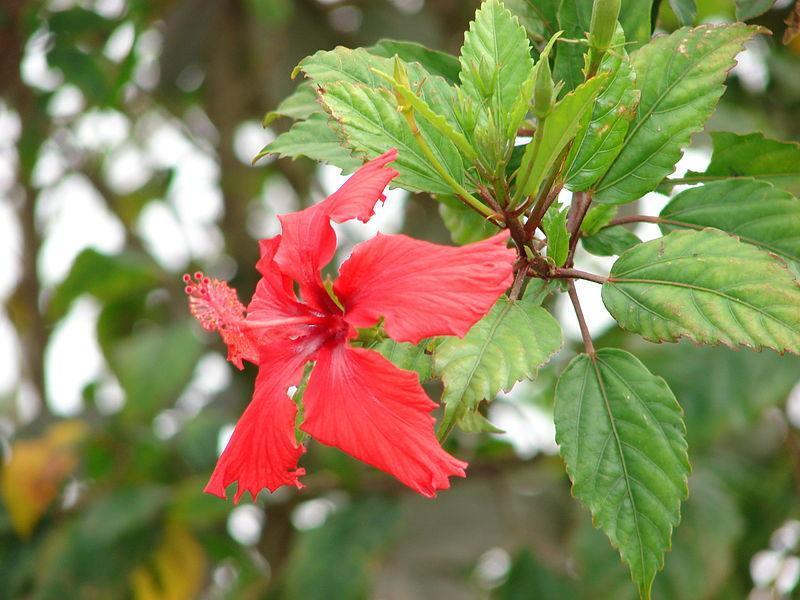
These pests can harm your plant’s leaves and blooms and disperse bacteria and diseases if left unchecked. The first step in preventing bugs and insects from harming this lovely blossom is recognizing pests on your hibiscus plant. Knowing what pests are attacking your plant will help you devise a strategy to eliminate them and restore your plant’s health.
The most frequent pests that cause holes in hibiscus leaves include earwigs, aphids, caterpillars, Japanese beetles, and grasshoppers. However, even though they all create holes in the hibiscus leaves, these pests can show themselves in various ways. Therefore, it is essential to be familiar with the symptoms of each pest in order to select the most appropriate method of control.
While it is possible to apply broad-spectrum insecticides, you should be aware that these chemicals will also kill helpful pollinators just as quickly as they kill pests.
Keep reading to learn more!
RELATED: Flower Power: 27 Different Types Of Hibiscus Flowers
What is Eating My Hibiscus Leaves?
1. Hibiscus Sawfly
Hibiscus Sawfly is a tiny, greenish-brown insect that loves munching on Hibiscus leaves and flowers. The adult form of hibiscus sawfly is about 1/2 inch long with white stripes on its wings. These black insects, which resemble wasps, make holes in the leaves of the plant in order to lay their eggs there. The resulting eggs hatch into voracious green larvae, which frequently consume all of the tissue in the leaves, leaving only the veins.
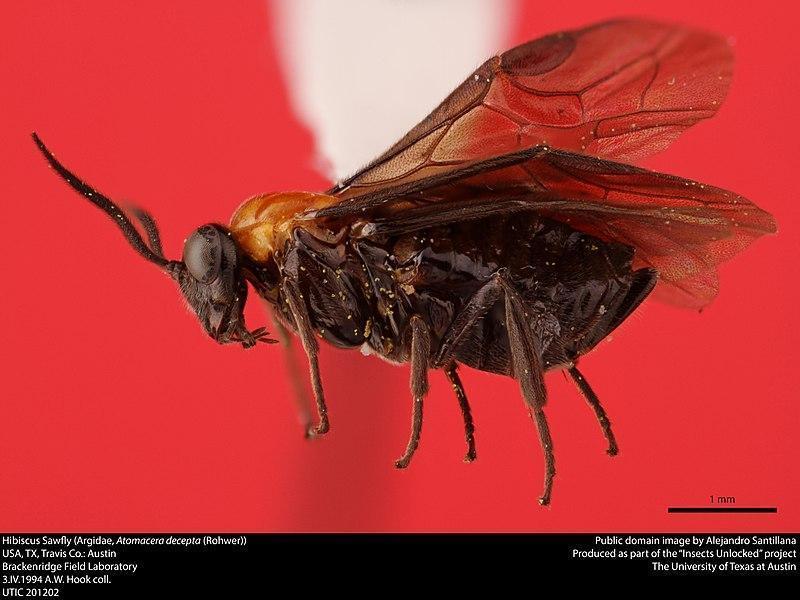
Adult hibiscus sawflies feed on the leaves of hibiscus plants, sucking out the juices and leaving behind a sticky residue that acts as an excellent glue for the insect’s eggs to adhere to leaves and stems. This sticky substance also serves as a protection for the eggs that will be otherwise washed away or blown away by water and wind.
Control
You should act straight once if sawflies are eating on your Hibiscus leaves. You can use insecticidal soap, horticultural oil, or pytherin, which are the most effective methods for getting rid of these pests. In addition, you can try pruning off afflicted leaves, hand-picking the larvae from the leaves, and dumping them into soapy water.
2. Aphids
Aphids, also known as plant lice, are small insects that suck juices from plants. They are most common on Hibiscus shrubs, but they can be found on other plants as well. Aphids are typically present at the top of the stems or sometimes on the blooms. They feed on the buds and flowers of the plant and are responsible for draining plants of their nutrient-rich liquids.
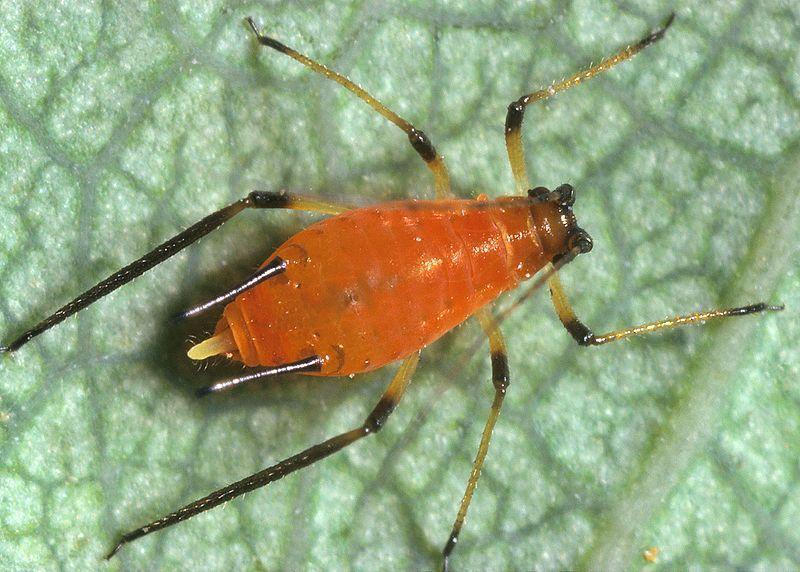
This will cause the hibiscus plant to wilt or die. In some cases, this might make the plant appear scorched because of how badly the insect has damaged its health.
An aphid infestation is characterized by the appearance of small green or white dots on the leaves. In some cases, these spots may be accompanied by a sticky substance that collects in the leaf center or along the veins of the leaf where aphids feed.
Control
Aphids can be managed in your garden without the use of chemicals in a number of ways. Spraying your plants with a constant, pressured stream of water, like that from a garden hose, is one such technique.
Although the pressure from the water will drive the pests off your plants, water alone won’t kill them. Aphid-eating predators like ladybugs and crisps can also be used. However, they also do not totally get rid of the pests from the blooms.
3. Whiteflies
Whiteflies are small, white insects that feed on the underside of hibiscus leaves. They attack the leaves of plants such as chrysanthemum, poinsettia, and hibiscus as well. Whiteflies are often mistaken for aphids, but the former is actually much smaller and easier to spot.

These insects feed on the plant sap and produce a sticky substance called honeydew. This honeydew attracts fungal infections, which weaken the plants and decrease their ability to produce oxygen through photosynthesis. As a result, the plant’s leaves will turn yellow, ultimately resulting in the plant’s death.
Control
Whiteflies are a common hibiscus pest, but if you know what to do, you can easily control them. For instance, you could use the garden hose to shower them with water. First, however, be sure to look closely at the underside of the leaves, where they often reside.
Another approach is to use sticky traps to catch the whiteflies. To make them whitefly-attractive, use wooden frames and paint them yellow. However, keeping the hibiscus plant healthy is the best defense against this pest.
4. Japanese Beetles
Japanese beetles indeed have a stunning iridescent green-blue-brown color, but the damage they may do to the leaves of your hibiscus plant isn’t nearly as attractive. Japanese beetles love to feast on hibiscus, and they won’t stop munching on the leaves of the plant until they get their fill and the eaves are completely littered with holes.
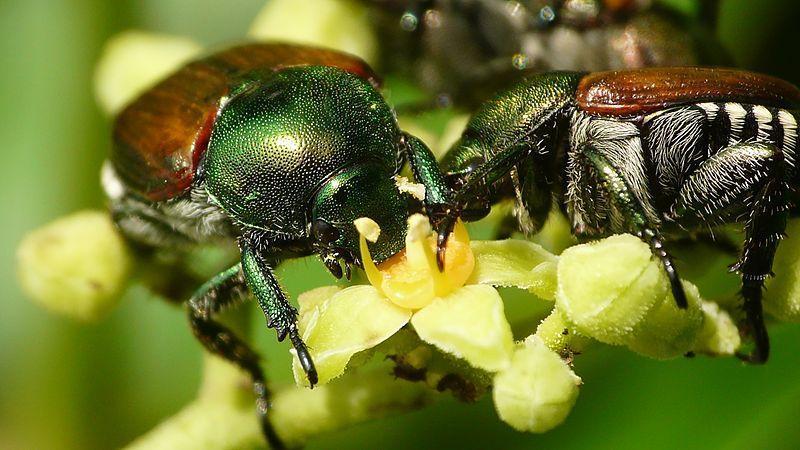
However, identifying Japanese beetles isn’t the difficult part; the challenging part is keeping them under control. Since Japanese beetles are an invasive species, they do not have a large number of natural predators. This means that the use of biological control methods is not an option. Even if you take them off your plants, you won’t be able to successfully control them because new ones will appear out of nowhere.
Control
Many different kinds of insecticides are available, and while most are efficient against Japanese beetles, some also kill beneficial insects. The most effective method is to use neem oil or a mild soap that kills insects.
Utilizing Milky Spore is another efficient method of controlling Japanese Beetles. Milky Spore is a disease that strikes Japanese beetles in the early stages of their lives and causes their death.
RELATED: Are Japanese Beetle Traps Helpful for Organic Pest Management?
5. Spider Mites
Spider mites are tiny, microscopic members of the Arachnid family that live on the undersides of leaves of hibiscus plants and produce silk. They are 1/16 of an inch long, and they look like spiders. Spider mites use their saliva to digest plant tissue and feed on plant fluids, leaving behind small white bumps on the hibiscus leaves.
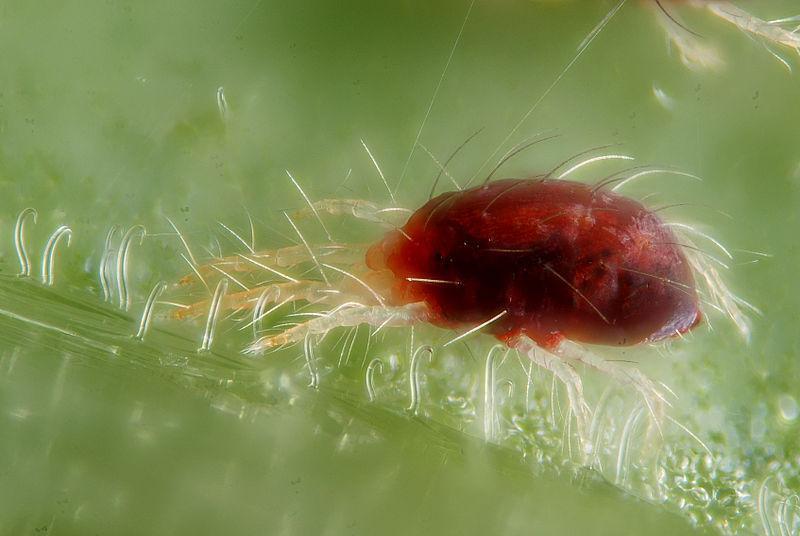
Spider mites are often found in the plant’s upper leaves, but they can also occasionally be found on lower leaves and stems. Spider mites produce honeydew (a sweet substance excreted by insects) which may attract other pests such as ants, aphids, and thrips to your plant. This can result in further damage to your plants.
Control
Spider mites are a sort of bug that can be quite challenging to eliminate completely from a place. Unfortunately, they are also relatively resistant to most insecticides, making it even more difficult to keep them under control.
There are, however, additional ways to get rid of them, such as clearing the area surrounding your hibiscus plants of any weeds and spraying them with a solution of water, vinegar, and hydrogen peroxide.
You can also try spraying your plants with an insecticidal soap that contains pyrethrin.
6. Mealybugs
Mealybugs are tiny insects that feed on plants by sucking the sap from them. They have a high reproduction rate and can damage hibiscus blossoms in a short amount of time. They are guarded by cottony particles that have a waxy consistency.
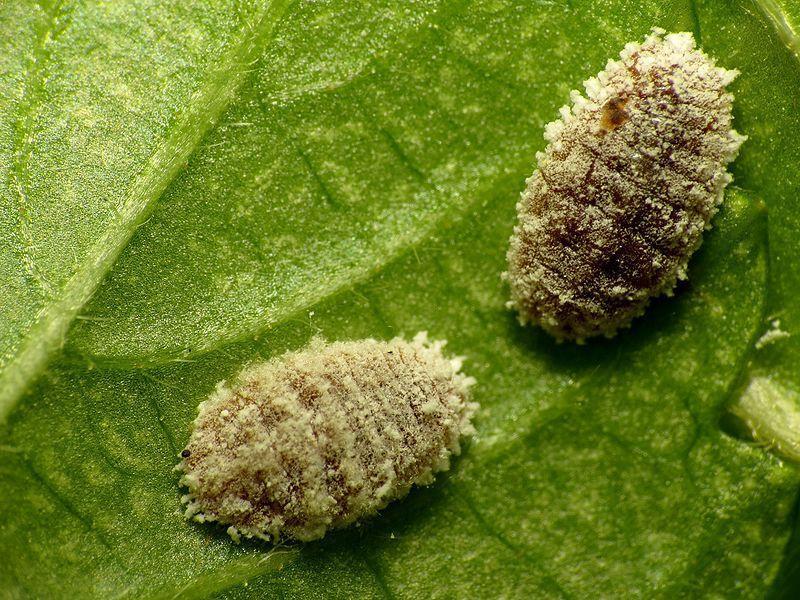
Control
To prevent the spread of mealybugs, it is essential to segregate diseased plants as soon as any abnormalities in the plant’s health become apparent.
In addition, insecticidal soaps, insecticidal sprays, neem oil, and predatory insects such as lacewings, lace bugs, and parasitic wasps can also be used to control mealybugs.
7. Thrips
Insects belonging to the order Thrips get their food by sucking sap from hibiscus plants’ leaves and blossoms; yet, most of this order’s members do not do any discernible harm to the plants they feed on. Thrips are also referred to as thunder flies. They do nothing more than penetrate the plant’s outer coat to extract the juices from the plant.
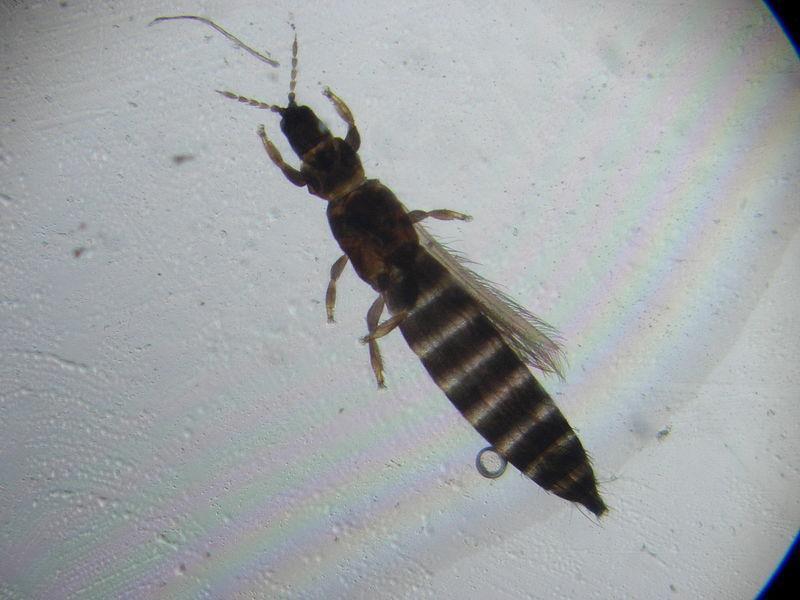
The upper surface of leaves that thrips have eaten upon frequently develops a whitish or silvery discoloration over time. The discolored patches are typically characterized by a large number of tiny specks that are black in color.
Control
Controlling greenhouse thrips is as simple as applying insecticidal soaps, natural pyrethrins, and horticultural oil together with piperonyl butoxide.
You can also use other contact sprays on the bottom of the leaves that are infested. However, multiple applications may be required.
Final Thoughts
As obvious from the data above, holes in the leaves of the hibiscus plant are produced by a number of pests, each of which requires a unique approach to eradication. However, despite the fact that it may appear to be an impossible mission, it is very much possible.
Take good care of your hibiscus, and be on the lookout for any signs of disease or alterations in the appearance of the plant. You may also encourage the development of predatory species like beetles and dragonflies in your garden.
Additionally, pesticides are always an option. However, keep in mind that these chemicals can potentially hurt or kill beneficial insects and pollinators.
Frequently Asked Questions
What is the best insect repellent for hibiscus?
The best insecticide for hibiscus is determined by the type of bug that is attacking the plant. Moreover, because hibiscus is a somewhat sensitive plant, the best pesticides for hibiscus are those that are organic and free of harsh chemicals.
Is vinegar good for hibiscus plants?
Vinegar, much like dishwashing detergent, is deadly to insects, particularly aphids. However, vinegar should not be used on hibiscus plants directly. To use vinegar to remove pests from hibiscus, make a light mist by applying a gentle spray to the tops and bottoms of the leaves.
Can I spray Sevin on hibiscus?
Sevin can be safely used to control aphids on roses, mums, and other decorative plants such as hibiscus. Even though Sevin concentrate is highly potent, it will not do any damage to the hibiscus plant’s flowers, leaves, or buds.
What kills hibiscus sawfly?
Due to their camouflaged appearance and underground feeding habits, hibiscus sawfly larvae are difficult to spot. However, if you locate them on your hibiscus plant in a large number, you can spray them with insecticidal soap, horticultural oil, or Spinosad.
What caterpillar eats hibiscus leaves?
Hibiscus, and maybe other members of the cotton family, are the preferred food of the caterpillars of the Atomacera decepta species. Unfortunately, very little information is available regarding this species, even though it feeds both tropical and hardy hibiscus plants.
Do ants eat hibiscus leaves?
Ants do not cause damage to hibiscus directly; nevertheless, they protect harmful insects such as scale, aphids, and other sap-sucking parasites by eating beneficial insects. These bugs deposit honeydew on the plant leaves, which is a favorite food of ants.
How do I get rid of hibiscus beetles?
To control hibiscus beetles in your garden, put a few white or yellow containers filled with soapy water at the base of the plant. Since these beetles are drawn to light-colored blooms, in particular, beetles may be attracted to and drown in these soapy water containers.
Sources For Further Reading
Pest Management Techniques for Hibiscus Disease. (2022). Retrieved 22 July 2022, from https://mrec.ifas.ufl.edu/foliage/resrpts/rh_91_4.htm
Common Insect Pests of Hibiscus. (2022). Retrieved 22 July 2022, from http://www.uky.edu/Ag/Entomology/treepestguide/hibiscus.html
Managing Pests in Gardens: Trees and Shrubs: Hibiscus—UC IPM. (2022). Retrieved 22 July 2022, from http://ipm.ucanr.edu/PMG/GARDEN/PLANTS/hibiscus.html
Editor’s Recommendations
What Are Mealybugs? How To Kill Them On Succulent Plants?
Furry Caterpillar Types with An Identification Guide, Fun Facts, And Pictures
Types Of White Spiders – A Complete Identification Guide, Fun Facts And More







